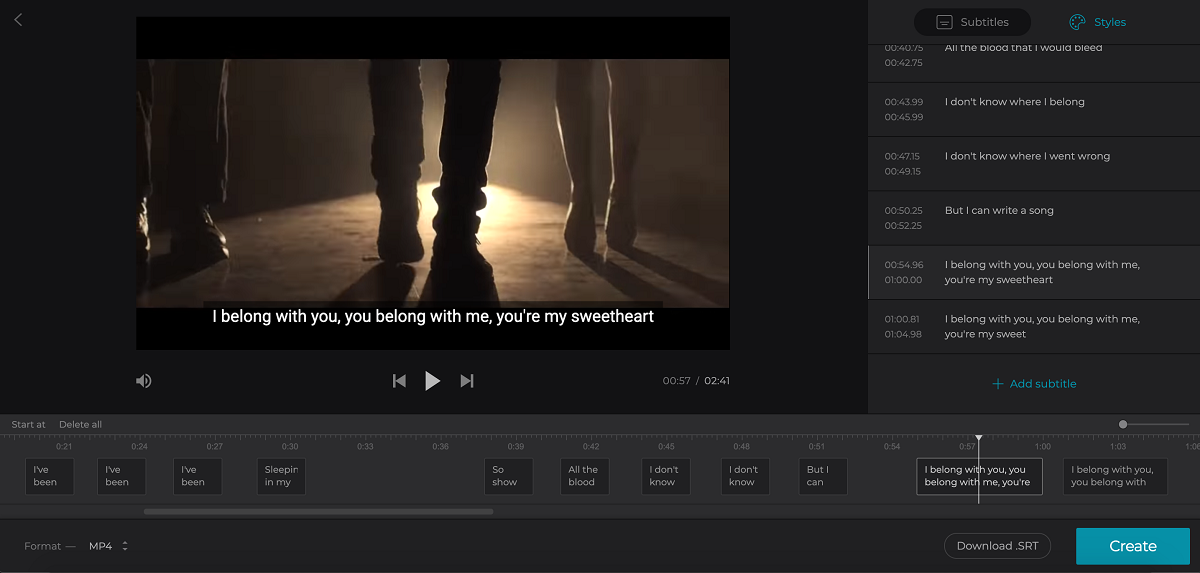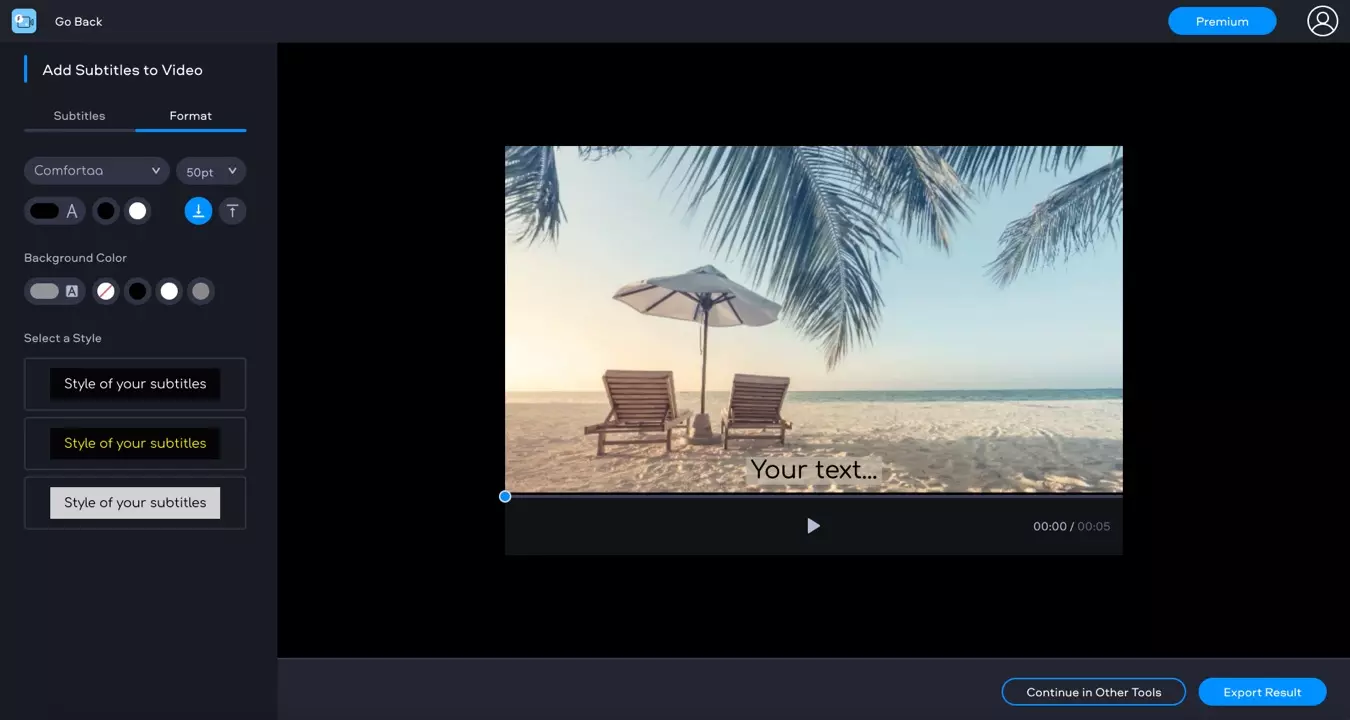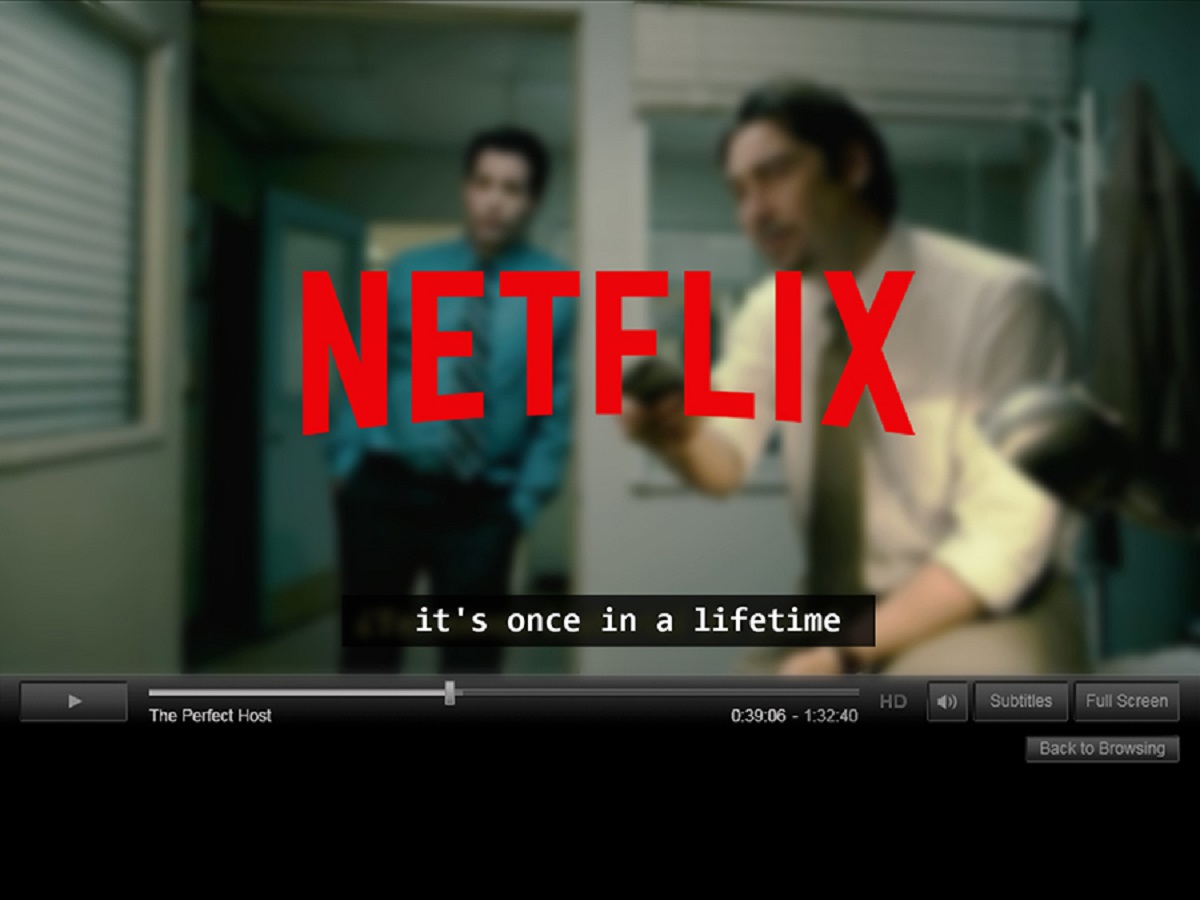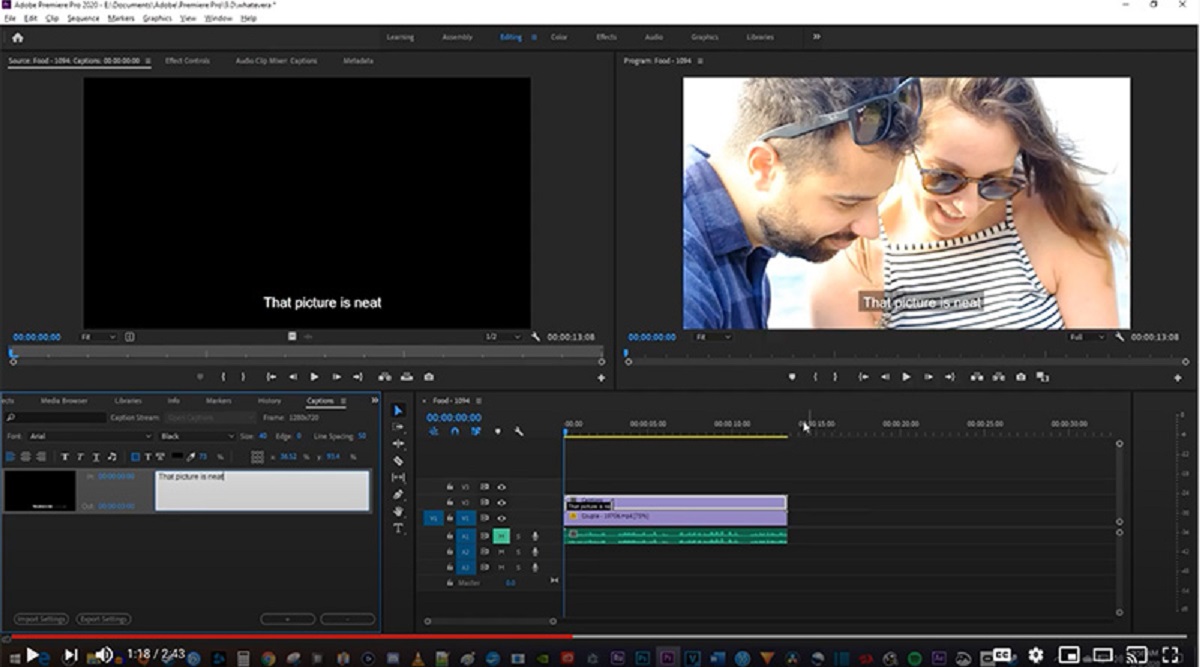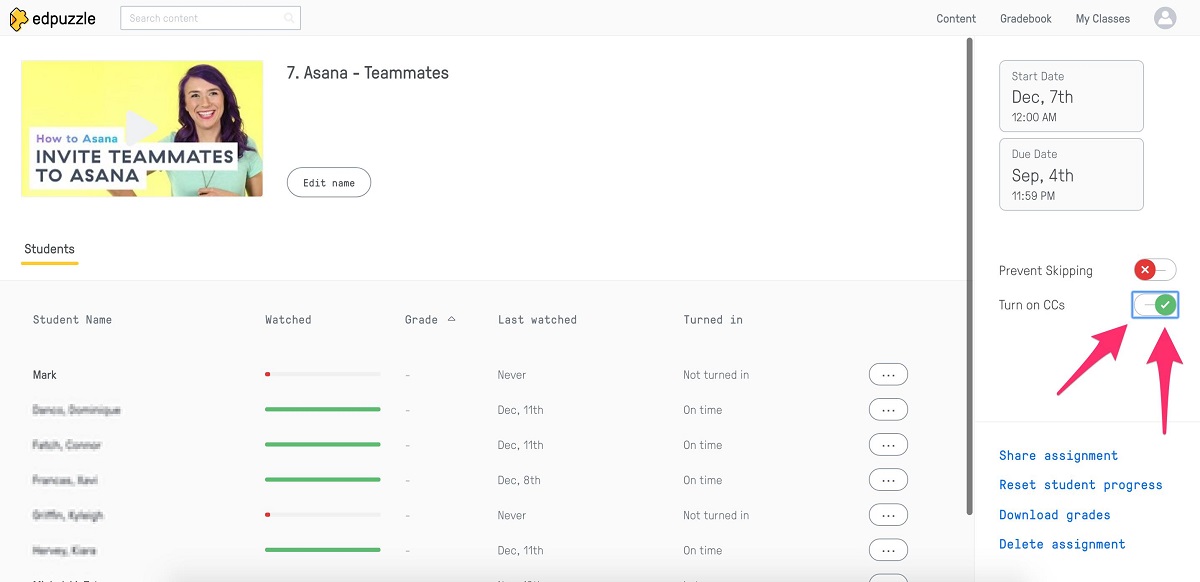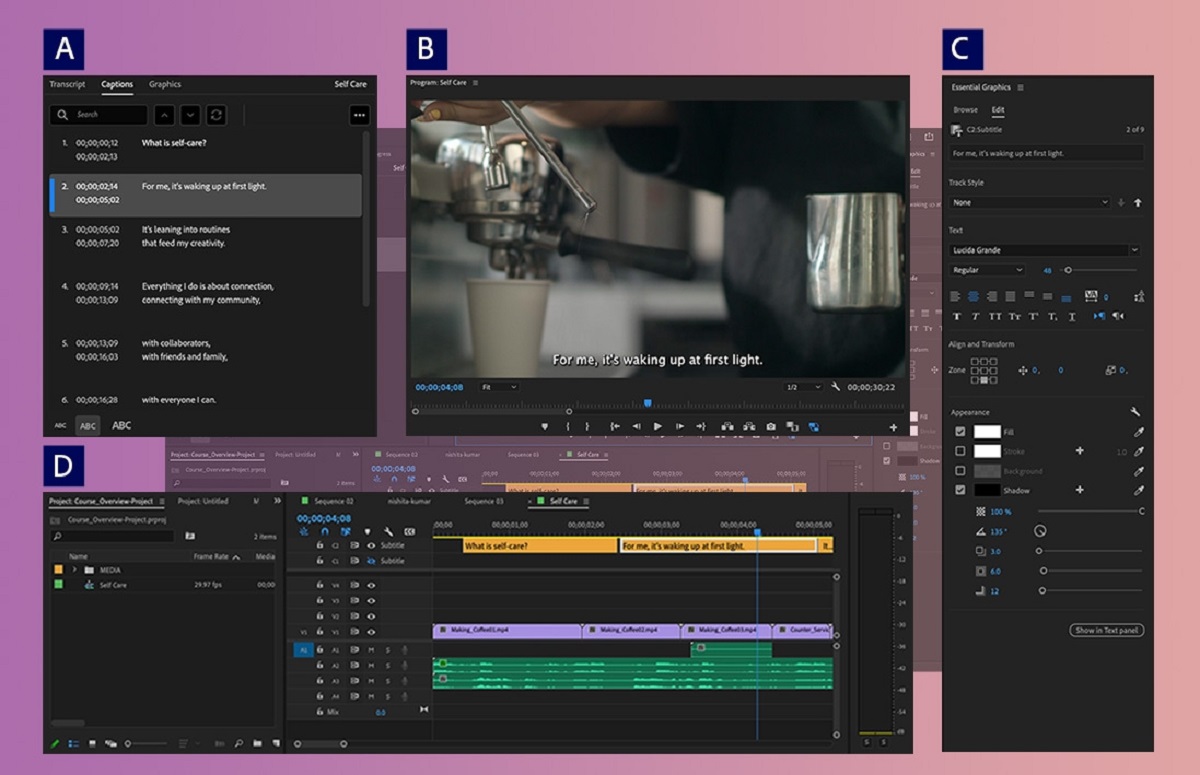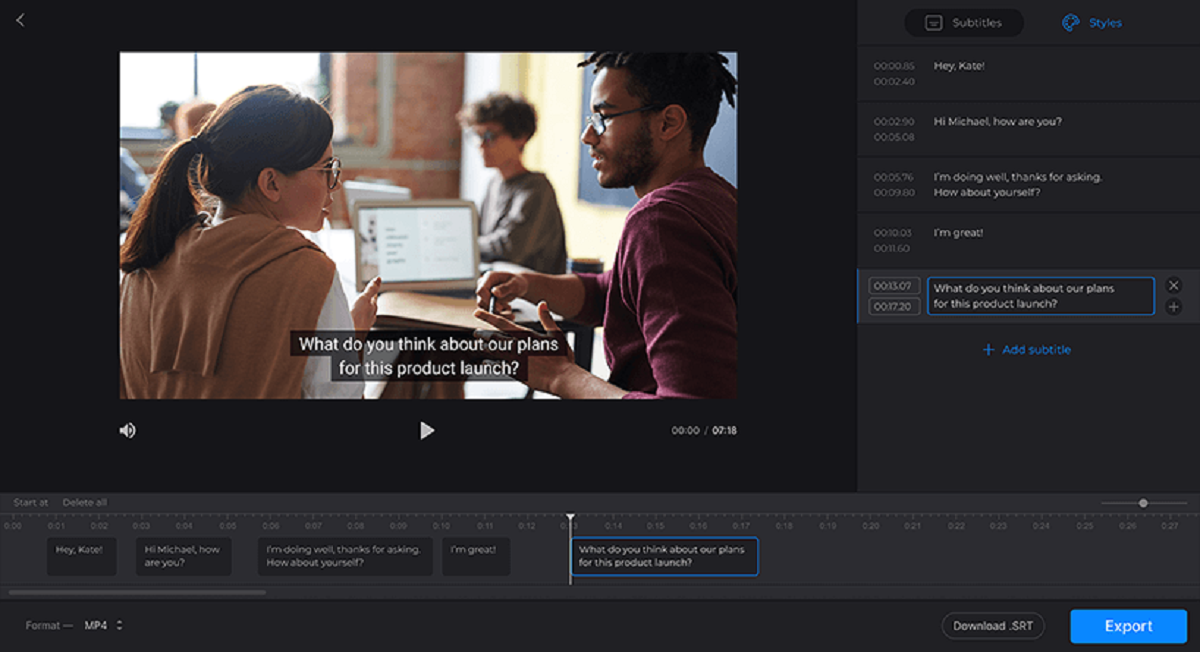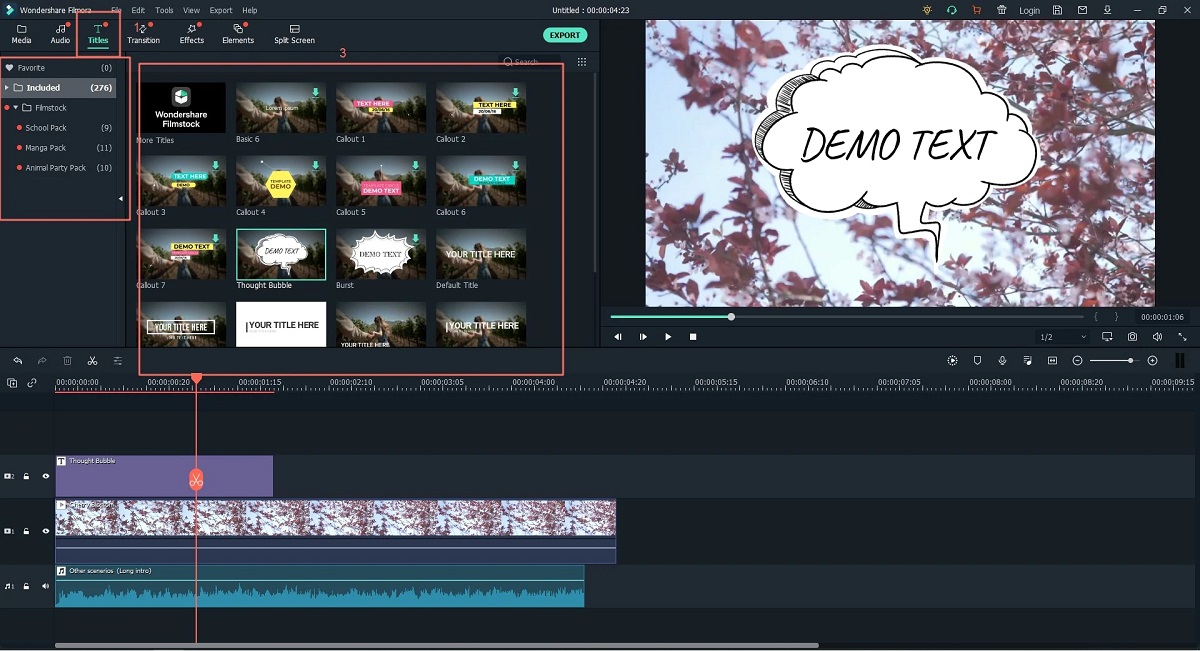Introduction
Subtitles are textual representations of the spoken dialogue or narration in a video, film, or television show. They provide a written translation of the audio content, allowing viewers to follow along and understand the dialogue even if they don’t speak the language fluently or have difficulty hearing. Subtitles can be displayed at the bottom of the screen, synchronized with the corresponding spoken words or synced to specific moments in the video for accessibility.
In today’s digital age, subtitles have become an essential aspect of content creation, as they help connect with a diverse audience across various linguistic backgrounds and aid in reaching a broader range of viewers. Whether you’re producing educational videos, entertainment content, or marketing materials, the inclusion of subtitles can greatly enhance the accessibility and impact of your videos.
When it comes to the importance of subtitles, several key factors come into play. Firstly, subtitles make your content more inclusive. They enable individuals who are deaf or hard of hearing to access and enjoy your videos. By providing a written representation of the spoken words, you can ensure that no one is left out and that your message reaches a wider audience.
Furthermore, subtitles are essential for viewers who speak a different language or have limited proficiency in the video’s original language. By providing translations, subtitles allow these individuals to understand and engage with your content fully. Additionally, subtitles help viewers comprehend accents, dialects, or fast-paced speech that may otherwise be challenging to grasp, ensuring a seamless viewing experience for all.
Accurate subtitles are crucial to maintain the integrity and comprehension of the content. They should reflect the original dialogue as faithfully as possible, ensuring that the viewers receive an accurate representation of the spoken words. Inaccurate subtitles can lead to confusion, misinterpretation, or even convey a completely different message than intended, which can hinder the overall impact and effectiveness of the video.
In the following sections, we will explore different methods of creating subtitles, from manual methods to using subtitle editing software. We will also provide tips for creating professional-looking subtitles and highlight common mistakes to avoid. By the end of this article, you will have a comprehensive understanding of how to create accurate and visually appealing subtitles for your videos.
What are subtitles?
Subtitles are textual representations of the spoken dialogue or narration in a video, film, or television show. They appear on-screen, usually at the bottom, and provide a written translation of the audio content. Subtitles are used to assist viewers who may have difficulty understanding the spoken language, whether due to hearing impairment, language barriers, or other reasons.
The primary purpose of subtitles is to ensure that the dialogue and important audio cues are conveyed accurately to the viewers. By displaying the text of what is being said on-screen, subtitles allow individuals with hearing impairments to follow the story and participate in the viewing experience. Deaf viewers can rely on subtitles to understand the dialogues and comprehend the plot, enabling them to enjoy movies and TV shows alongside their hearing counterparts.
Subtitles are not limited to aiding the hearing impaired. They also serve a vital role in making content more accessible to a global audience. As videos and online content continue to reach viewers worldwide, subtitles provide a means of overcoming language barriers. By translating the dialogue into different languages, subtitles enable people who may not understand the original language to comprehend what is being said and fully engage with the content.
Subtitles also play a crucial role in helping viewers understand accents, dialects, or unfamiliar terminology. Sometimes, the spoken language may be challenging to grasp due to regional accents, fast-paced dialogue, or technical jargon. Subtitles provide a written representation of the dialogue, allowing viewers to read and comprehend the words more effectively, ensuring that the intended message is conveyed accurately.
Moreover, subtitles have become an integral part of the educational realm. Online courses, instructional videos, and documentaries often utilize subtitles to improve the learning experience. Subtitles enable students to follow along with the audio and reinforce their understanding of the subject matter. They can also serve as a valuable tool for language learners by providing written support while listening to native speakers.
With the rise of video content on social media platforms, subtitles have become even more significant. Many users scroll through their feeds without sound, relying on subtitles to grasp the essence of the video. By incorporating subtitles, content creators can ensure that their message is conveyed and understood, even in soundless environments.
In summary, subtitles are an essential component of audiovisual media. They assist individuals with hearing impairments, break down language barriers, aid comprehension of accents or complicated language, facilitate learning, and improve accessibility to a wide range of viewers. By providing a written representation of the dialogue, subtitles enhance the viewing experience and make content more inclusive and engaging to diverse audiences.
Why are subtitles important?
Subtitles play a crucial role in enhancing the accessibility, reach, and comprehension of audiovisual content. They provide numerous benefits to both viewers and content creators, making them an important element to consider when producing videos or films.
One of the key reasons why subtitles are important is their ability to improve accessibility. By providing a text representation of the audio content, subtitles allow individuals with hearing impairments to fully engage with videos. Deaf or hard-of-hearing viewers can read the dialogue and follow the story, ensuring that they don’t miss out on important details and emotions conveyed through sound.
Subtitles are also essential for viewers who may not speak the video’s original language fluently or at all. By providing translations, subtitles enable these individuals to understand and enjoy the content in their native language. This eliminates language barriers and expands the potential audience reach, making the video more inclusive and appealing to a diverse range of viewers.
Moreover, subtitles can be beneficial to viewers in noisy environments or situations where audio cannot be played aloud. By reading the text on-screen, individuals can still follow and comprehend the dialogue without relying solely on audio cues. This includes public spaces, libraries, crowded places, or even late-night viewing when volume needs to be lowered.
Subtitles also play a significant role in improving the comprehension of accents, dialects, or fast speech. Certain accents or dialects can be challenging to understand, especially for non-native speakers. Subtitles provide a written representation of the dialogue, allowing viewers to read along and grasp the meaning more easily. They can also help individuals who are learning a new language by providing visual support and reinforcement of auditory learning.
Additionallly, subtitles can greatly enhance the SEO (Search Engine Optimization) of videos. Search engines like Google can crawl the text in subtitles, allowing the video to appear in search results related to the dialogue or keywords within the video. This increases the visibility and discoverability of the content, attracting more viewers.
From a content creator’s perspective, subtitles can significantly expand the potential audience and increase the reach of their videos. By providing translations or captions, videos become accessible to a global audience, allowing the creator’s message to resonate with viewers from different cultural and linguistic backgrounds. This can lead to increased engagement, shares, and overall visibility of the content.
In summary, subtitles are important because they improve accessibility for individuals with hearing impairments, break down language barriers, aid comprehension of accents and fast speech, assist individuals in noisy environments or situations where audio cannot be played aloud, and enhance the SEO and reach of videos. By incorporating subtitles, content creators can make their videos more inclusive, appealing, and accessible to a wider audience.
The importance of accurate subtitles
Accurate subtitles are vital to ensure that the viewers receive a correct representation of the dialogue or narration in a video. They play a significant role in enhancing understanding, accessibility, and overall viewing experience. Here are the reasons why accurate subtitles are so important:
1. Clarity of communication: Accurate subtitles help convey the intended message of the video clearly. They provide viewers with a textual representation of the spoken words, ensuring that the dialogue is understood correctly. This is particularly crucial for videos that contain complex or technical information, where accuracy is essential for comprehension.
2. Inclusion of all viewers: Accurate subtitles make content accessible to individuals who are deaf or hard of hearing. By providing an accurate representation of the dialogue, these viewers can fully engage with the video and follow the storyline. Inclusive content ensures that no one is left out and that all viewers can enjoy and benefit from the information presented.
3. Language comprehension: Subtitles are often used to provide translations of videos into different languages, enabling viewers who are not fluent in the video’s original language to understand and enjoy the content. Accurate translations are crucial to maintain the integrity and meaning of the dialogue, ensuring that the viewers receive an authentic and accurate representation of the spoken words.
4. Accessibility for non-native speakers: Accurate subtitles help non-native speakers improve their language skills by providing support while listening to spoken dialogue. They can read along with the subtitles and reinforce their understanding of the language. Subtitles also aid in the comprehension of accents, dialects, or fast speech that may be challenging for non-native speakers.
5. Reinforcement of audiovisual information: Accurate subtitles can reinforce important audio cues, such as sound effects or background noises, enhancing the overall viewing experience. They provide additional textual information that complements the visual and auditory aspects of the video, resulting in a more comprehensive understanding of the content.
6. Compliance with accessibility regulations: Accurate subtitles are essential to comply with accessibility regulations and guidelines. Many countries and organizations have specific requirements for subtitles, especially for content provided in educational or governmental contexts. By ensuring accuracy, content creators can adhere to these standards and make their videos accessible to a broader audience.
7. Maintaining credibility and professionalism: Accurate subtitles reflect the professionalism and credibility of the content creator. Failing to provide accurate subtitles can lead to confusion, misinterpretation, or even a negative perception of the video or brand. It is essential to take the time and effort to create precise subtitles that align with the content’s overall quality.
8. Enhanced viewer engagement: Accurate subtitles contribute to the overall viewer engagement with the video. They facilitate understanding, enrich the viewing experience, and improve the retention of the information presented. Viewers are more likely to stay engaged and watch the video in its entirety when accurate subtitles are provided.
In summary, accurate subtitles are crucial for clear communication, inclusion of all viewers, language comprehension, accessibility for non-native speakers, reinforcement of audiovisual information, compliance with accessibility regulations, maintaining credibility and professionalism, and enhancing viewer engagement. By prioritizing accuracy in subtitle creation, content creators can ensure that their videos are accessible, understood, and impactful.
Choosing the right subtitle format
When it comes to creating subtitles, choosing the right subtitle format is essential for compatibility, functionality, and ease of use. Different video platforms, editing software, and devices support various subtitle formats, and selecting the appropriate format ensures seamless integration and optimal viewing experience. Here are some factors to consider when choosing the right subtitle format:
1. Compatibility: The subtitle format should be compatible with the video platform or device on which the content will be distributed. Popular subtitle formats, such as SubRip (.srt), WebVTT (.vtt), and Timed Text Markup Language (.ttml), are widely supported across different platforms and devices, ensuring that the subtitles can be easily uploaded and displayed without any issues.
2. Functionality: Consider the functionality you want to implement with your subtitles. Some subtitle formats support advanced features, such as positioning, font styles, colors, and text effects. If you want to add visual elements to your subtitles or have more control over their appearance and display, choosing a format that supports these features, like the DVD subtitle format (.sub/.idx), may be necessary.
3. Accessibility: Accessibility should be a priority when choosing a subtitle format. Formats that support closed captions, such as WebVTT or SCC (Scenarist Closed Caption), are ideal for ensuring that viewers can easily enable or disable subtitles according to their preferences. Closed captions provide not only the dialogue but also additional information about sound effects, speaker identification, and other audio cues.
4. Editing capabilities: Consider the ease of editing or modifying subtitles when selecting a subtitle format. Some formats, like SubRip or SubViewer, have simple and straightforward structures, making them easy to edit using basic text editors. On the other hand, complex formats like EBU-STL (European Broadcasting Union – Subtitle) or SMPTE-TT (Society of Motion Picture and Television Engineers – Timed Text) may require specialized software for editing.
5. Multilingual support: If you plan to provide subtitles in multiple languages, ensure that the chosen format supports multilingual subtitles. Formats like SubStation Alpha (.ssa/.ass) or Universal Subtitle Format (.usf) allow for the inclusion of multiple subtitle tracks, making it easier to manage and display subtitles in different languages simultaneously.
6. Metadata compatibility: Consider whether the subtitle format supports metadata or annotations. Metadata can contain additional information about the subtitles, such as language, title, description, or timing information. Formats like Enhanced Subtitle Format (.eas), Subtitle Markup Language (.xml), or W3C Timed Text (.ttml) have provisions for metadata, which can be useful for organizing, identifying, or searching subtitles in a video library or database.
7. Platform-specific requirements: Some video platforms or distribution channels may have specific subtitle format requirements. It’s important to research and understand these requirements before selecting a subtitle format to ensure compliance and successful upload of your subtitles.
8. User preferences: Lastly, consider the preferences and needs of your target audience. Some viewers may prefer specific subtitle formats or have devices that support only certain formats. Considering user preferences can enhance the viewing experience and ensure that your subtitles are accessible and user-friendly.
By carefully considering compatibility, functionality, accessibility, editing capabilities, multilingual support, metadata compatibility, platform-specific requirements, and user preferences, you can choose the right subtitle format that best suits your video content and audience, ensuring seamless integration and optimal viewing experience.
How to create subtitles manually
Creating subtitles manually involves transcribing the dialogue or narration of a video and synchronizing the text with the corresponding audio. While it can be time-consuming, manual subtitle creation allows for more control and precision over the final subtitles. Here are the steps to create subtitles manually:
1. Transcribing: Watch the video and transcribe the dialogue or narration into a text document. Listen carefully and type out the spoken words, ensuring accuracy and capturing any important details or nuances. Break the text into smaller segments, typically a few seconds long, to ensure easy synchronization with the video.
2. Time coding: Assign timestamps to each subtitle segment to indicate when they should appear and disappear on the screen. Use the video editing software or a subtitle editor to enter the start and end times for each subtitle segment. The format for timestamps is typically hours:minutes:seconds.milliseconds.
3. Synchronization: Sync the subtitles with the video by adjusting the timing of each subtitle segment. Ensure that the text appears on-screen just before the corresponding spoken words are heard and disappears when the dialogue or narration is complete. Fine-tune the timing to maintain a comfortable reading pace for viewers.
4. Formatting: Apply appropriate formatting to the subtitle text to enhance readability. Use a legible font, choose an appropriate font size, and ensure sufficient contrast with the background to improve visibility. Consider using bold or italics to distinguish speaker names or emphasize important words or phrases.
5. Line breaks: Break the subtitle text into two or three lines as needed to avoid overcrowding the screen. Ideally, each line should have a maximum of 42 characters to ensure readability. Break the lines at natural pauses or conjunctions to create a smooth reading flow for viewers.
6. Editing and proofreading: Review the subtitles carefully for accuracy, grammar, spelling, and synchronization. Watch the video alongside the subtitles to ensure proper timing and alignment. Make necessary adjustments and proofread the text multiple times to eliminate any errors or inconsistencies.
7. Exporting: Once you are satisfied with the subtitles, export them in the desired subtitle format. Common subtitle formats include SubRip (.srt), WebVTT (.vtt), or SubStation Alpha (.ssa/.ass). Ensure compatibility with the video platform or playback software that will be used to display the subtitles.
8. Testing: Test the subtitles by playing the video with the subtitles using different devices and media players. Ensure that the subtitles display correctly, timing is accurate, and the text is readable. Make any necessary adjustments based on the testing results.
Creating subtitles manually requires time, attention to detail, and accuracy. However, it allows for complete control over the final subtitles, ensuring that they are a precise representation of the audio content and enhance the viewing experience for all viewers.
Steps to create subtitles using subtitle editing software
Subtitle editing software provides a convenient and efficient way to create subtitles for videos. These tools offer specialized features and functionalities to streamline the subtitle creation process. Here are the steps to create subtitles using subtitle editing software:
1. Choose a subtitle editing software: Select a reliable and user-friendly subtitle editing software that suits your needs. Some popular options include Aegisub, Subtitle Edit, Subtitle Workshop, and Jubler. Download and install the software on your computer.
2. Import the video: Open the subtitle editing software and import the video file to which you want to add subtitles. Most subtitle editing software supports a wide range of video formats, allowing you to work with different types of videos.
3. Set the timing: Play the video within the software and adjust the timing by adding timestamps to each subtitle segment. Use shortcuts or the software’s interface to set the starting and ending times for each subtitle. Ensure synchronization between the spoken words and the appearance of the subtitles on the screen.
4. Enter the subtitle text: Once the timing is set, type the subtitle text for each segment in the software’s text editor. Make sure to match the spoken words accurately and avoid lengthy or excessive text that may overcrowd the screen. Utilize line breaks to ensure readability and maintain a comfortable reading pace for viewers.
5. Formatting: Customize the formatting of the subtitles to enhance readability and visual appeal. Adjust the font size, select an appropriate font style, and ensure sufficient contrast with the background. Utilize bold or italics to emphasize important words or indicate speaker names.
6. Editing and proofreading: Review the subtitles for any errors, grammatical mistakes, or synchronization issues. Watch the video alongside the subtitles to ensure proper timing and alignment. Make any necessary adjustments and proofread the text multiple times to ensure accuracy.
7. Export the subtitles: Once you are satisfied with the subtitles, export them in the desired subtitle format, such as SubRip (.srt), WebVTT (.vtt), or SubStation Alpha (.ssa/.ass). Specify the file name and location for the exported subtitles.
8. Test the subtitles: Test the subtitles by playing the video with the subtitles using various media players or video streaming platforms. Verify that the subtitles display correctly, and the timing aligns accurately with the audio. Make any necessary adjustments based on the testing results.
9. Save the project: Save the subtitle editing project file (.srt, .ssa, etc.) in the subtitle editing software for future reference or potential revisions. This allows you to easily edit or modify the subtitles if needed.
Using subtitle editing software streamlines the process of creating subtitles by providing dedicated tools and functionalities. By following these steps, you can efficiently create accurate subtitles that enhance the overall viewing experience for your audience.
Tips for creating professional-looking subtitles
Creating professional-looking subtitles involves not just accurate translation and synchronization but also paying attention to the visual aspect of the subtitles. Well-designed subtitles can enhance the viewing experience and ensure that the text is easy to read and understand. Here are some tips to create professional-looking subtitles:
1. Use a legible font: Choose a font that is clear, easily readable, and appropriate for the content. Sans-serif fonts like Arial or Helvetica are commonly used for subtitles due to their simplicity and clarity.
2. Adjust the font size: Ensure that the font size is appropriate for the video’s resolution and viewing platform. The font size should be large enough to be comfortably read on various screen sizes and distances.
3. Provide ample contrast: Use colors that provide sufficient contrast with the background to enhance readability. For example, use white or light-colored text on a dark background or vice versa.
4. Limit the number of characters per line: Subtitles with a maximum of two lines and around 35 to 40 characters per line are generally easier to read. Avoid overcrowding the screen with too much text.
5. Break subtitles at natural pauses: When breaking a subtitle into multiple lines, ensure that the line breaks occur at natural pauses or conjunctions in the dialogue. This helps to maintain a smooth reading flow.
6. Time subtitles accurately: Pay attention to the timing of the subtitles and ensure they appear in sync with the dialogue. Subtitles should appear a fraction of a second before the corresponding dialogue starts, allowing viewers to read the text comfortably.
7. Keep subtitles on-screen long enough: Subtitles should remain on-screen long enough for viewers to read and comprehend the text. Consider the complexity of the dialogue and adjust the duration accordingly.
8. Use consistency in formatting: Maintain consistent formatting throughout the subtitles. Use the same font, font size, and color for all subtitles to ensure a cohesive and professional look.
9. Indicate speaker changes: If there are multiple speakers in a video, use different formatting or styling to indicate speaker changes. This makes it easier for viewers to distinguish between different speakers.
10. Proofread and edit: Always proofread the subtitles for errors, including grammar, spelling, and punctuation. Review the subtitles multiple times to ensure accuracy and readability. Additionally, make any necessary edits to synchronize the subtitles with the audio optimally.
11. Test and optimize: Test the subtitles across different devices and screen sizes to ensure their readability and compatibility. Make any necessary optimizations based on the test results to improve the overall viewing experience.
12. Consider the video’s visual elements: Take into account any visual elements, such as on-screen text or graphics, that may overlap with the subtitles. Adjust the positioning or use a contrasting background to ensure the subtitles are always legible.
By following these tips, you can create professional-looking subtitles that enhance the overall quality and impact of your video content, making it accessible and enjoyable for a wider audience.
Common mistakes to avoid in subtitle creation
Subtitle creation requires careful attention to detail and accuracy to ensure that the subtitles effectively convey the intended message and enhance the viewing experience. However, several common mistakes can occur during the subtitle creation process. Being aware of these mistakes can help you avoid them and create high-quality subtitles. Here are some common mistakes to avoid in subtitle creation:
1. Inaccurate translations: Incorrect or inaccurate translations can lead to confusion or misinterpretation of the dialogue. Ensure the subtitles accurately reflect the meaning and context of the original dialogue, taking into account cultural nuances and idiomatic expressions.
2. Poor timing: Subtitles that appear too early or too late can disrupt the viewing experience and make it difficult for viewers to follow along. Ensure precise timing by synchronizing the subtitles closely with the spoken words, allowing viewers enough time to read and comprehend the text.
3. Overly long subtitles: Subtitles that contain too much text or are displayed for an extended period can be challenging for viewers to read and process. Keep the subtitles concise and limit them to two lines with a maximum of 35 to 40 characters per line.
4. Lack of line breaks at natural pauses: Failing to break subtitles at natural pauses or conjunctions can create a jumbled or confusing reading flow. Break the lines of subtitles where there are suitable pauses in the speech to ensure clarity and readability.
5. Poor font choice: The font you choose for subtitles should be clear, legible, and easily readable on different screens and devices. Avoid overly decorative or stylized fonts that may hinder readability.
6. Insufficient contrast with the background: Subtitles should have enough contrast with the video’s background to ensure visibility. Avoid using colors or shades that blend into the background or make it difficult for viewers to distinguish the text.
7. Lack of consistency: Maintaining consistency throughout the subtitles is important for the viewer’s visual experience. Use the same font, size, color, and formatting throughout the entire video to create a cohesive and professional look.
8. Ignoring text placement: Consider the placement of subtitles in relation to any on-screen text, graphics, or action. Ensure that the subtitles do not obscure important visual elements and are placed in a logical and non-distracting manner.
9. Misspellings or grammatical errors: Subtitles with spelling mistakes, grammatical errors, or punctuation errors can detract from the overall quality of the content and give a unprofessional impression. Take the time to proofread and edit the subtitles to ensure correct spelling, grammar, and punctuation.
10. Failure to consider viewer preferences: Different viewers may have specific subtitle preferences, such as caption style or positioning. Take into account user preferences and accessibility guidelines to create subtitles that cater to a wider range of viewers.
By avoiding these common mistakes and striving for accuracy, readability, and consistency, you can create high-quality subtitles that enhance the overall viewing experience and effectively communicate the content of your videos.
Final thoughts
Subtitles play a vital role in making video content accessible, inclusive, and engaging to a diverse audience. Whether you are creating educational videos, entertainment content, or corporate videos, incorporating accurate and visually appealing subtitles is essential. By following the tips and guidelines discussed in this article, you can create professional-looking subtitles that enhance the overall quality and impact of your videos.
Remember the importance of accuracy in subtitle creation. Accurate translations, precise timing, and proper synchronization are key elements in ensuring that the subtitles faithfully represent the original dialogue or narration. Take into account the needs and preferences of your target audience to create subtitles that cater to their specific requirements and enhance their viewing experience.
Furthermore, the visual aspect of subtitles should not be overlooked. Consider the font choice, size, contrast, and formatting to make the subtitles visually appealing and easy to read. Pay attention to line breaks, consistency, and proper placement to ensure that the subtitles do not interfere with the viewer’s experience or obstruct important visual elements in the video.
Additionally, proofreading and editing are crucial steps in subtitle creation. Take the time to review and revise the subtitles, checking for accuracy, spelling, grammar, and proper timing. Be meticulous in your editing process to deliver subtitles that are error-free and enhance the overall professionalism of your video content.
Lastly, always test the subtitles across different devices and platforms to ensure compatibility and optimize the viewing experience. By testing and optimizing the subtitles, you can address any issues or inconsistencies and ensure that the subtitles are displayed correctly, synchronized accurately, and provide the intended accessibility to your audience.
Incorporating subtitles into your video content not only enhances accessibility and inclusivity but also improves the overall engagement and reach of your videos. By investing time and effort in creating accurate, visually appealing, and well-timed subtitles, you can communicate effectively with a broader audience and make a lasting impact with your content.







